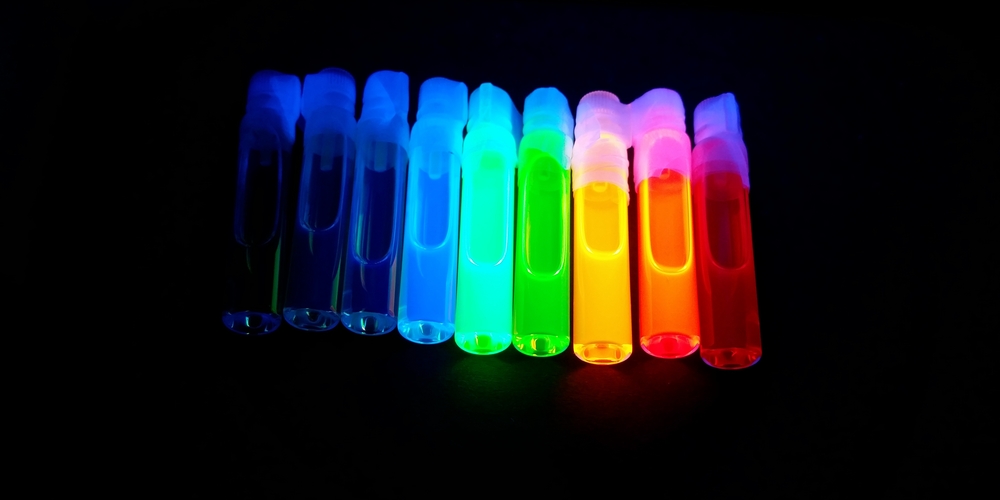Understanding the emission profile of perovskite QDs

Scientsts show that owing to the crystal structure of perovskite, the level of bright energy divides into three
A study by researchers in the chemistry and physics Institutes of the University of Campinas (UNICAMP) in the state of São Paulo, Brazil, in collaboration with scientists at the University of Michigan in US, is providing novel insights into the physics of perovskite quantum dots. They've published their work in Science Advances.
The team were interested in a problem that can impair the efficiency of devices or appliances. When light is absorbed by a material, the electrons are promoted to higher energy levels, and when they return to their fundamental state, each one can emit a photon back to the environment.
In conventional quantum dots the electron's return trip to its fundamental state can be disturbed by various quantum phenomena, delaying the emission of light to the exterior.The imprisonment of electrons in this way, known as the 'dark state', retards the emission of light, in contrast with the path that lets them return quickly to the fundamental state and hence to emit light more efficiently and directly ('bright state').
It's been found recently that this delay is much shorter in cesium lead-halide perovskite nanocrystals.
To study this fine structure without isolating single nanocrystalss, the team used multidimensional coherent spectroscopy at cryogenic temperatures to reveal coherences involving triplet states of a CsPbI3 NC ensemble.
"We used coherent spectroscopy, which enabled us to analyse separately the behaviour of the electrons in each nanomaterial in an ensemble of tens of billions of nanomaterials. The study is groundbreaking insofar as it combines a relatively new class of nanomaterials - perovskite - with an entirely novel detection technique," Lázaro Padilha Junior, principal investigator for the project on the Brazilian side, told Agência FAPESP.
"We were able to verify the energy alignment between the bright state [associated with triplets] and the dark state [associated with singlets], indicating how this alignment depends on the size of the nanomaterial. We also made discoveries regarding the interactions between these states, opening up opportunities for the use of these systems in other fields of technology, such as quantum information," Padilha said.
"Owing to the crystal structure of perovskite, the level of bright energy divides into three, forming a triplet. This provides various paths for excitation and for the electrons to return to the fundamental state. The most striking result of the study was that by analysing the lifetimes of each of the three bright states and the characteristics of the signal emitted by the sample we obtained evidence that the dark state is present but located at a higher energy level than two of the three bright states. This means that when light is shone on the sample the excited electrons are trapped only if they occupy the highest bright level and are then shifted to the dark state. If they occupy the lower bright levels, they return to the fundamental state more efficiently."
To study how electrons interact with light in these materials, the group used multidimensional coherent spectroscopy (MDCS), in which a burst of ultrashort laser pulses (each lasting about 80 femtoseconds) is beamed at a sample of perovskite chilled to - 269degC.
"The pulses irradiate the sample at tightly controlled intervals. By modifying the intervals and detecting the light emitted by the sample as a function of the interval, we can analyze the electron-light interaction and its dynamics with high temporal precision, mapping the typical interaction times, the energy levels with which they couple, and the interactions with other particles," Padilha said.
The MDCS technique can be used to analyse billions of nanoparticles at the same time and to distinguish between different families of nanoparticles present in the sample.
'Multidimensional coherent spectroscopy reveals triplet state coherences in cesium lead-halide perovskite nanocrystals' by Albert Liu et al; Science Advances 01 Jan 2021:Vol. 7, no. 1,


































